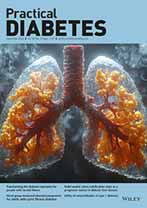Unusual failure of a pre-filled glucose syringe during treatment of hypoglycaemia
We would like to draw the attention of readers to an episode of severe hypoglycaemia that occurred during the management of diabetic ketoacidosis and the unusual mechanical failure of a pre-filled glucose syringe which hampered resuscitation.
A 78-year-old woman with diabetic ketoacidosis was receiving intravenous insulin (1–6-units per hour of Actrapid according to a sliding scale) and 5% glucose. Both infusions were linked together by a ‘Y’ connection and attached to a 20-gauge cannula (Optiva 2 by Johnson and Johnson) located in a peripheral vein. Severe hypoglycaemia unexpectedly occurred with a blood sugar of less than 1 mmol/L. Injection of 50% glucose in a 50 ml ‘mini-jet’ pre-filled syringe through the dorsal port of this small cannula proved difficult as the solution was very viscous. The infusion line was then disconnected and the same pre-filled glucose syringe was directly attached to the venous cannula. At this stage the distal tip of the plastic syringe snapped off completely and became firmly embedded in the end of the cannula (see Figure 1).

Illustration showing the unusual mechanical failure of a pre-filled glucose syringe
The resultant total loss of contiguity rendered it impossible to inject the pre-filled glucose or reconnect the glucose infusion. Another venous cannula was quickly inserted to allow glucose administration and fortunately no harm came to the patient during this delay.
In the above clinical scenario, the injection of a viscous solution of 50% glucose from the pre-filled syringe through the dorsal port of the venous cannula must have required a modicum of downward force. Attaching the same syringe to the free end of the cannula would only require a gentle twisting action. We wondered if the syringe's inner metal spike had sheared off the encasing plastic tip during these manoeuvres. However, several attempts by us proved unsuccessful in replicating this phenomenon. Investigations by our Pharmacy Department showed that this type of syringe is in common use by the hospitals within the South Essex region and in all probability it is used more widely in the United Kingdom. The manufacturer (International Medication Systems, Slough, UK) had not received any similar reports so our experience may be an isolated example of unexpected fragility with this type of syringe. What is beyond doubt is that hypoglycaemia is an important complication in ketoacidosis even with low dose insulin regimens and, therefore, such patients need both careful monitoring and reliable venous access.
References
Mark Pritchard*, Christopher Chan*, Farhad Huwez*, * Basildon University Hospital, Nethermayne, Basildon, Essex SS16 5NL, UK




